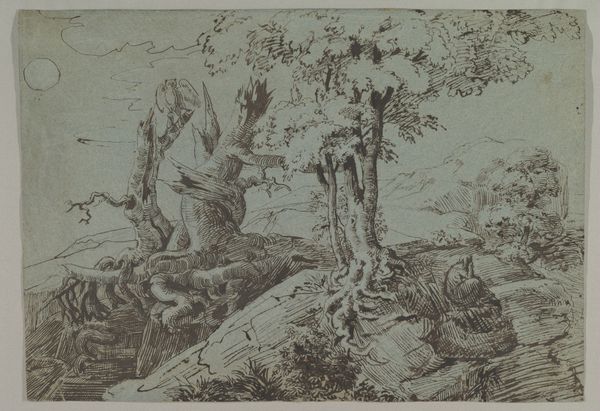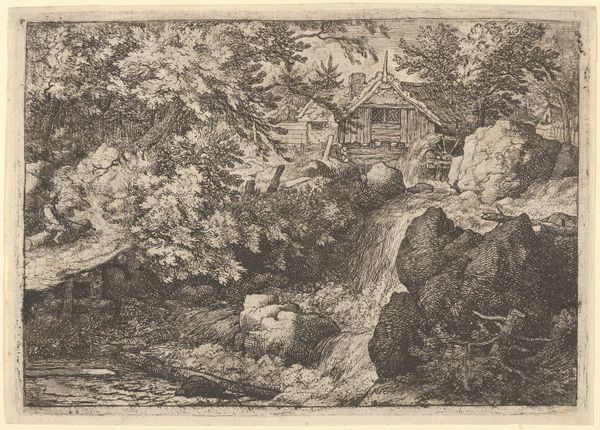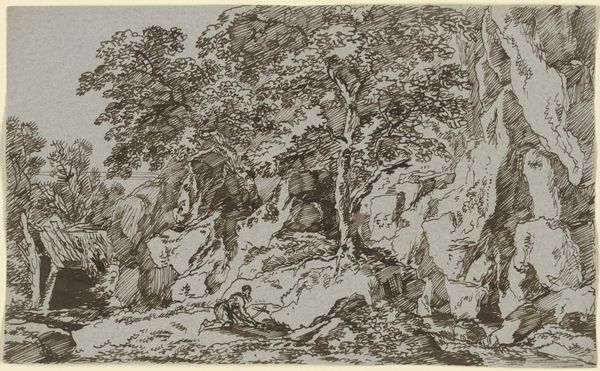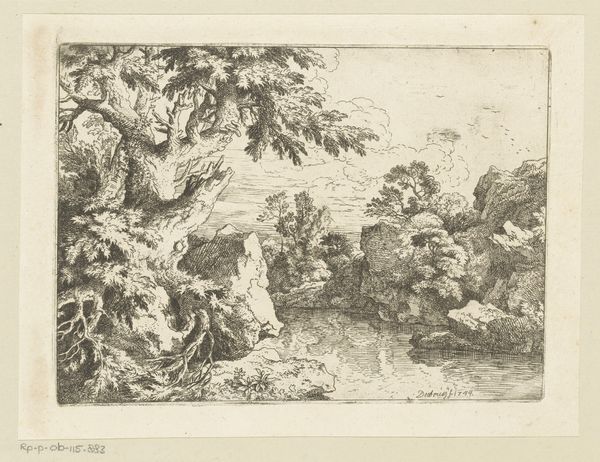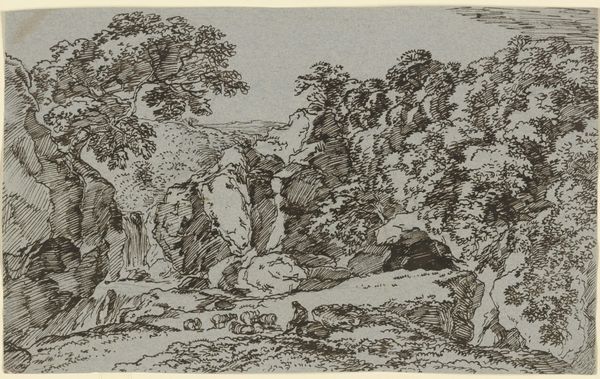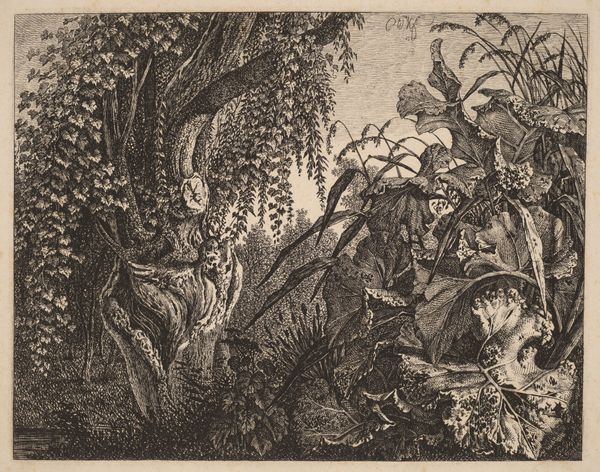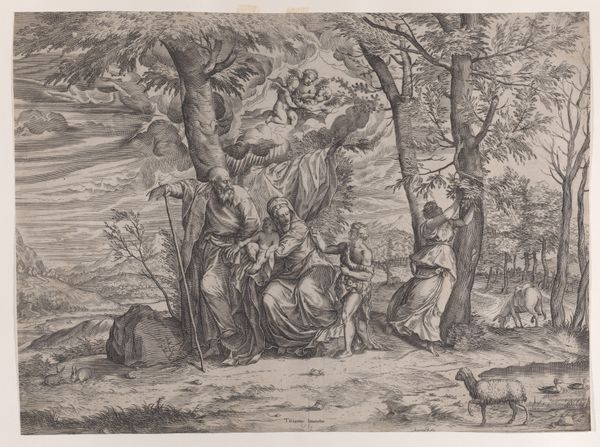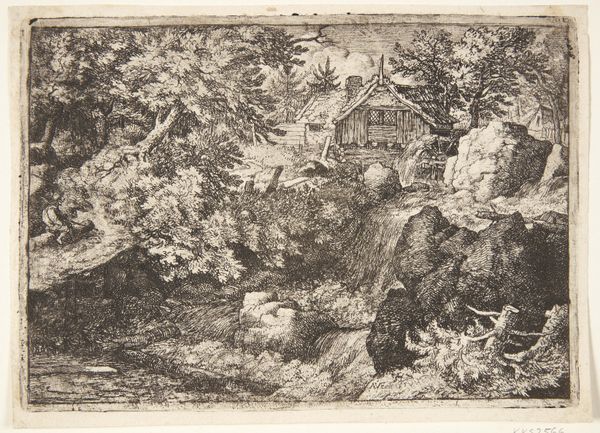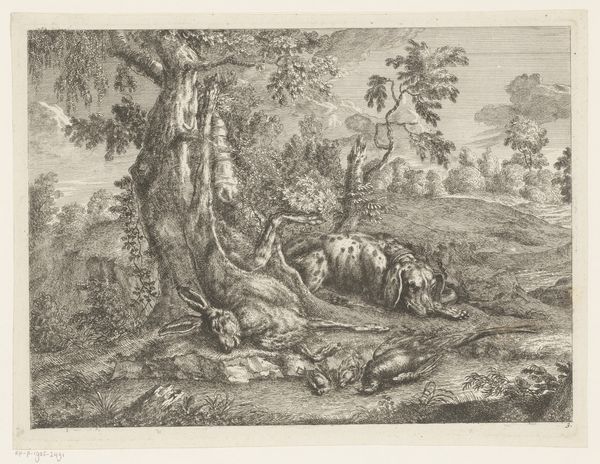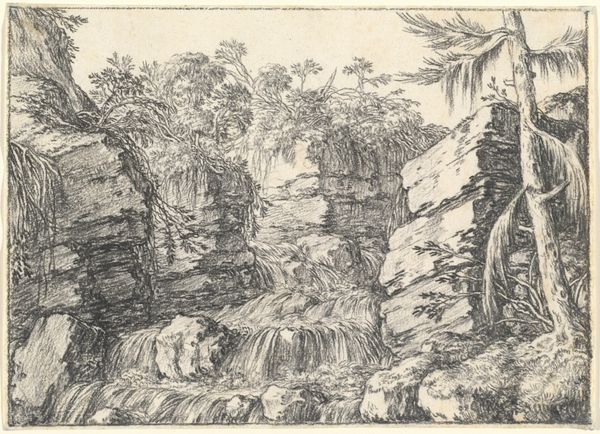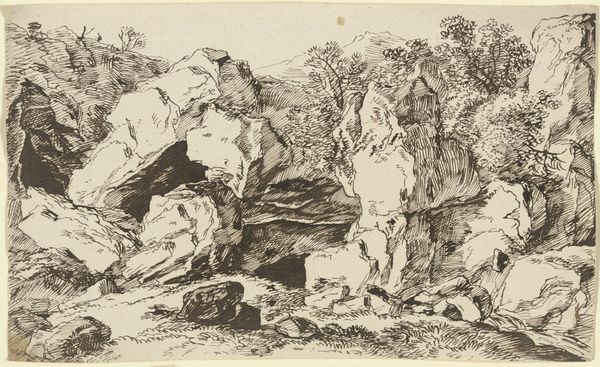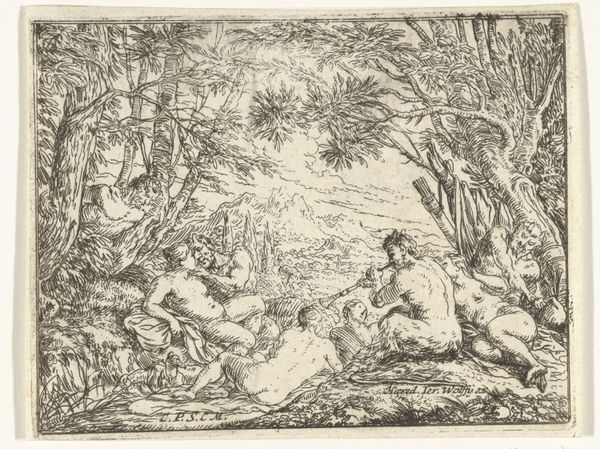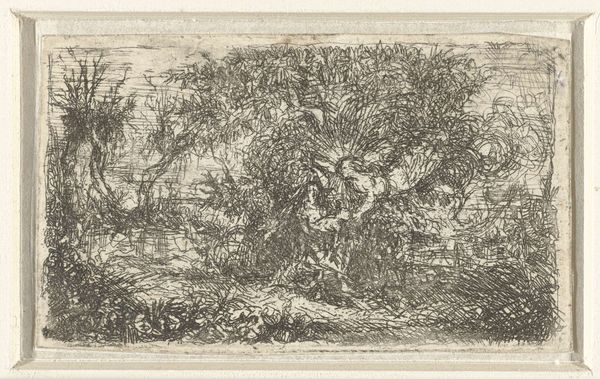
print, etching, engraving
#
ink painting
# print
#
etching
#
landscape
#
figuration
#
northern-renaissance
#
engraving
Dimensions: 7 5/8 x 11 9/16 in. (19.37 x 29.37 cm) (plate)
Copyright: Public Domain
Curator: Before us, we have "Balaam and the Angel," a c. 16th-century etching and engraving by Hanns Lautensack, housed here at the Minneapolis Institute of Art. Editor: It strikes me as almost theatrical. The dark, looming rock formations, like a stage set, certainly lend a dramatic air to the encounter. Curator: Indeed. Consider the materials—the printmaking process itself. The artist, Lautensack, carefully manipulated the metal plate to create this sense of depth, through hatching and cross-hatching. This wasn't about quick, mass production but skillful labor to get it right. Editor: Absolutely. But look closer at those central figures, Balaam and the angel, locked in a confrontation within that dramatic space. The winged figure, almost radiant, halts Balaam's journey. Angels, as messengers of divine will, appearing in moments of crisis or decision. It's about revelation and turning points, isn't it? Curator: Right. And think about what's involved: acid, metal, ink, and paper. All combined through a printing press to spread ideas rapidly across Europe during the Reformation. These aren’t merely aesthetic decisions. Look at the cultural shifts in the social fabric of society that influence both production and distribution! Editor: I see it too: this tension between natural elements and something higher. Landscape with conflict. Symbolically charged landscape reflecting inner turmoil or moral crossroads. What choice will be made? Curator: That combination is exactly what provides so much complexity for a work of art seemingly made so simply, from just those humble materials. Editor: Well, whether you're focusing on the ink or on its narrative potency, it’s clearly a powerful image to grapple with from whatever viewpoint.
Comments
No comments
Be the first to comment and join the conversation on the ultimate creative platform.
